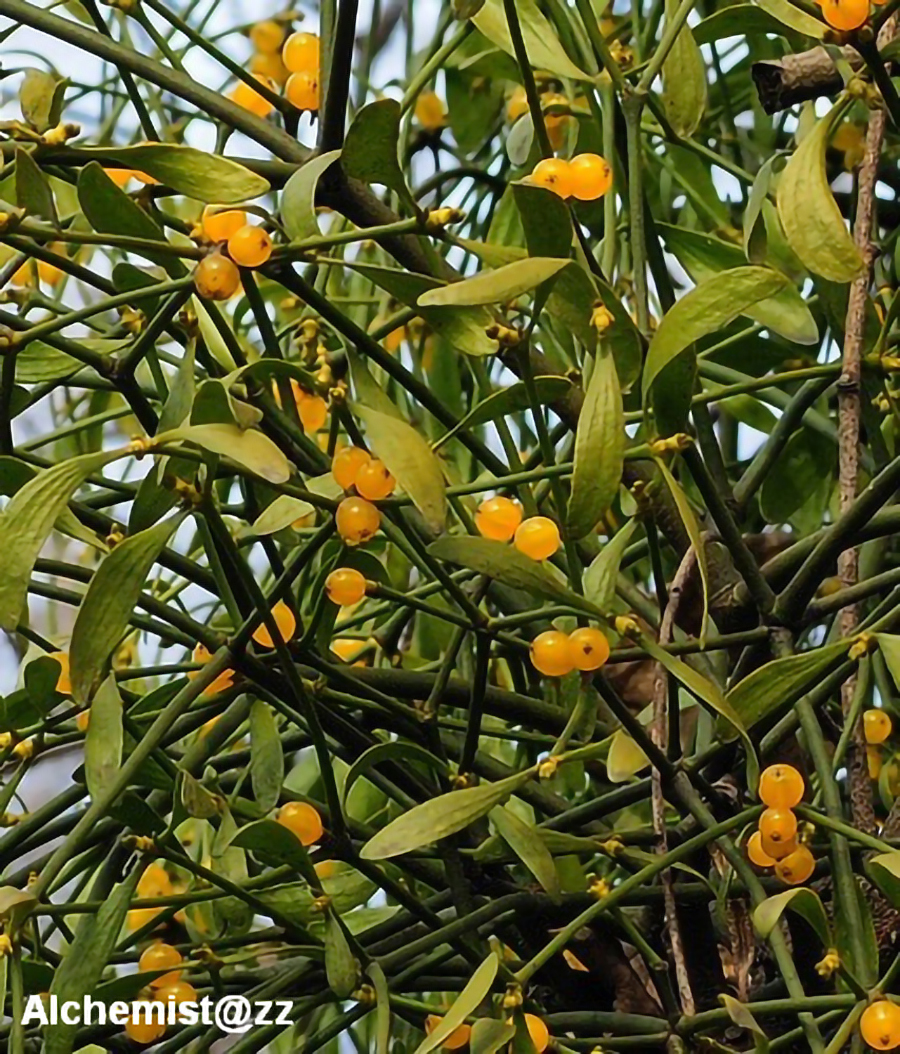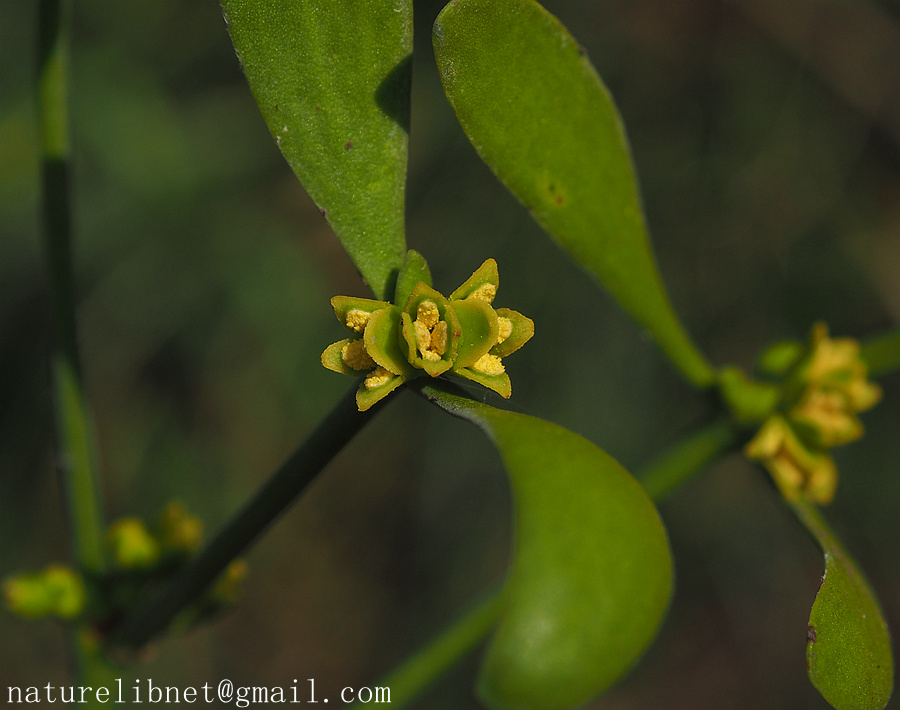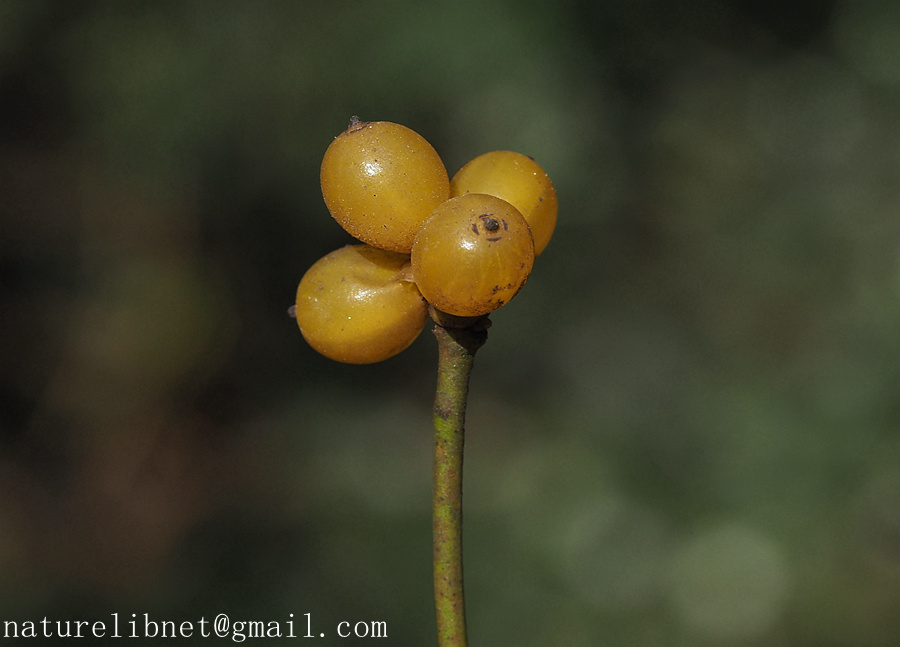槲寄生 Viscum coloratum
- Scientific Name: Viscum coloratum (Kom.) Nakai
- Ref: T.Mori, Enum. Pl. Corea:128. 1919
- Synonyms:
- Viscum album subsp. coloratum Kom.;
- V. album f. rubroaurantiacum (Makino) Kitag.
- V. alni-formosanae Hayata
- English Common Name: Korean mistletoe
- Chinese Common Name: 槲寄生 hú∙jìshēng
- Japanese Common Name: ヤドリギ [宿り木] yadorigi
- Family: Viscaceae
- Genus: Viscum
- Distribution: Forests; 500-2200 m. Anhui, Fujian, Gansu, Guangxi, Guizhou, Hubei, Hunan, Jiangsu, Jiangxi, Sichuan, Taiwan, Zhejiang [Japan, Korea, E Russia].
Shrubs dioecious, green or yellowish green, 30-80 cm tall. Branching apical, di-, tri-, or polychotomous, terete; internodes 5-10 cm, nodes slightly swollen. Leaves opposite or ternate; petiole short; leaf blade elliptic or oblong-lanceolate, 3-7 × 0.7-1.5(-2) cm, leathery, 3-5-veined, base attenuate, apex obtuse or rounded. Inflorescences terminal. Male inflorescences cymes; peduncle to 5 mm, sometimes almost absent; involucre navicular, 5-7 mm, usually 3-flowered, central flower with 2 bracts or not. Female inflorescences cymose spikes, subsessile or with peduncle 2-3 mm, 3-5-flowered; terminal flower with 2 bracts or not, lateral flowers each with 1 bract; bracts broadly triangular, ca. 1.5 mm. Male flowers ellipsoid-ovoid in bud, ca. 2 mm; perianth lobes 4, triangular, ca. 1 mm. Stigma nipple-shaped. Berry yellowish, reddish, orange, or red, globose, 6-8 mm in diam. Fl. Apr-May, fr. Sep-Nov. (Flora of China)


